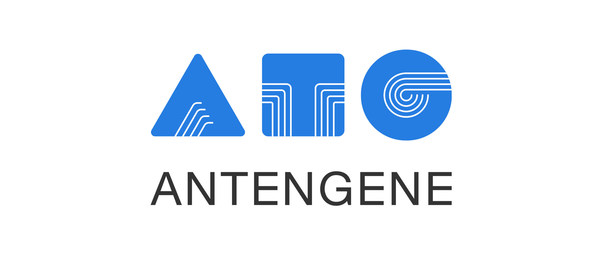 |
SHANGHAI and HONG KONG, Nov. 2, 2021 /PRNewswire/ -- Antengene Corporation Limited ("Antengene", SEHK: 6996.HK), a leading innovative biopharmaceutical company dedicated to discovering, developing and commercializing global first-in-class and/or best-in-class therapeutics in hematology and oncology, today announced that China's National Medical Products Administration (NMPA) has approved an open-label Phase Ib dose-escalation study designed to assess the safety of ATG-008 (onatasertib) in combination with ATG-010 (selinexor) in patients with relapsed/refractory diffuse large B-cell lymphoma (rrDLBCL).
This study will be conducted at ten centers across China, including its primary trial center at Sun Yat-Sen University Cancer Center. Composed of a dose-escalation phase and a dose-expansion phase, the study will enroll patients with rrDLBCL and treat these patients with the combination of ATG-008 and ATG-010, with the aim of determining the recommended dose of ATG-008 plus ATG-010 while further assessing the safety and efficacy of the combination regimen.
ATG-008 is a potent and selective mammalian target of rapamycin (mTOR) inhibitor capable of mTORC1 and mTORC2 dual-inhibition. In multiple cell lines of hematologic malignancies including 23 cell lines of DLBCL, ATG-008 was shown to be able to suppress cell proliferation and induce apoptosis. In xenograft animal models of the OCI-LY10 activated human B-cell (ABC) DLBCL cell line, ATG-008 at both 3 mg/kg and 10 mg/kg have exhibited potent antitumor activity as a single agent. ATG-010 is a potent first-in-class selective inhibitor of nuclear export (SINE) compound that has demonstrated broad spectrum antitumor activity in multiple hematologic malignancies and solid tumors. The US Food and Drug Administration (FDA) has approved selinexor as a single-agent for the treatment of relapsed/refractory diffuse large B-cell lymphoma (rrDLBCL).
Prof. Qingqing Cai, doctoral supervisor at Sun Yat-Sen University Cancer Center, Chair of the Lymphoma Group, Guangdong Medical Association Subcommittee on Oncology, and the principal investigator of the study, noted: "DLBCL is one of the most prevalent subtypes of non-Hodgkin lymphoma, 30% - 40% of patients will eventually relapse or become refractory. Patients with rrDLBCL commonly face a poor prognosis and a lack of alternative treatments, therefore there is an urgent need for safer and more effective treatment options with novel mechanisms of action in order to achieve prolonged progression-free survival and better quality of life. In preclinical studies of the DoHH-2 cell line and DoHH2 CDX mice models, ATG-008 plus ATG-010 have demonstrated potent synergistic antitumor activity both in vivo and in vitro, thus lending us confidence in continuing to investigate the synergistic effect of ATG-008 and ATG-010 in DLBCL."
Dr. Jay Mei, Founder, Chairman and CEO of Antengene, commented: "We are glad to be granted this approval by the NMPA for the open-label Phase Ib dose-escalation study designed to assess the safety of ATG-008 plus ATG-010 in rrDLBCL patients, as it marks a major milestone for Antengene. ATG-008 and ATG-010 have demonstrated strong antitumor activity as single agents in preclinical models of DLBCL, and selinexor has been approved by the US Food and Drug Administration for clinical use in this indication. Hopefully the combination of these agents will demonstrate synergies with amplified efficacy as a combination therapy for the treatment of rrDLBCL. We hope that the combination of ATG-008 and ATG-010 will benefit patients with rrDLBCL around the world."
About the MATCH Study
This open-label Phase Ib dose-escalation study is designed to evaluate the safety of ATG-008 (onatasertib) in combination with ATG-010 (selinexor) in adult patients with relapsed/refractory diffuse large B-cell lymphoma (rrDLBCL). The primary endpoints of the study include the maximum-tolerated dose (MTD) and recommended Phase II dose (RP2D) of ATG-008 plus ATG-010 in patients with rrDLBCL. The secondary endpoint is lymphoma response as assessed according to the modified Lugano response criteria (Cheson 2014).
About Antengene
Antengene Corporation Limited ("Antengene", SEHK: 6996.HK) is a leading clinical-stage R&D-driven biopharmaceutical company focused on innovative medicines for oncology and other life-threatening diseases. Antengene aims to provide the most advanced anti-cancer drugs to patients in the Asia Pacific Region and around the world. Since the beginning of operations in 2017, through leveraging partnerships as well as in-house drug delivery, Antengene has built a broad and expanding pipeline of clinical and pre-clinical assets. At present, Antengene has 13 assets under research, comprising 8 global rights assets and 5 assets with rights for Asia Pacific markets including the Greater China region. Antengene has obtained 18 investigational new drug (IND) approvals, submitted 6 new drug applications (NDAs) in multiple Asia Pacific markets, with the NDA for selinexor in South Korea already approved through a priority review process. Driven by its vision of "Treating Patients Beyond Borders", Antengene is committed to addressing significant unmet medical needs by discovering, developing, manufacturing and commercializing first-in-class/best-in-class therapeutics.
Forward-looking statements
The forward-looking statements made in this article relate only to the events or information as of the date on which the statements are made in this article. Except as required by law, we undertake no obligation to update or revise publicly any forward-looking statements, whether as a result of new information, future events or otherwise, after the date on which the statements are made or to reflect the occurrence of unanticipated events. You should read this article completely and with the understanding that our actual future results or performance may be materially different from what we expect. In this article, statements of, or references to, our intentions or those of any of our Directors or our Company are made as of the date of this article. Any of these intentions may alter in light of future development.